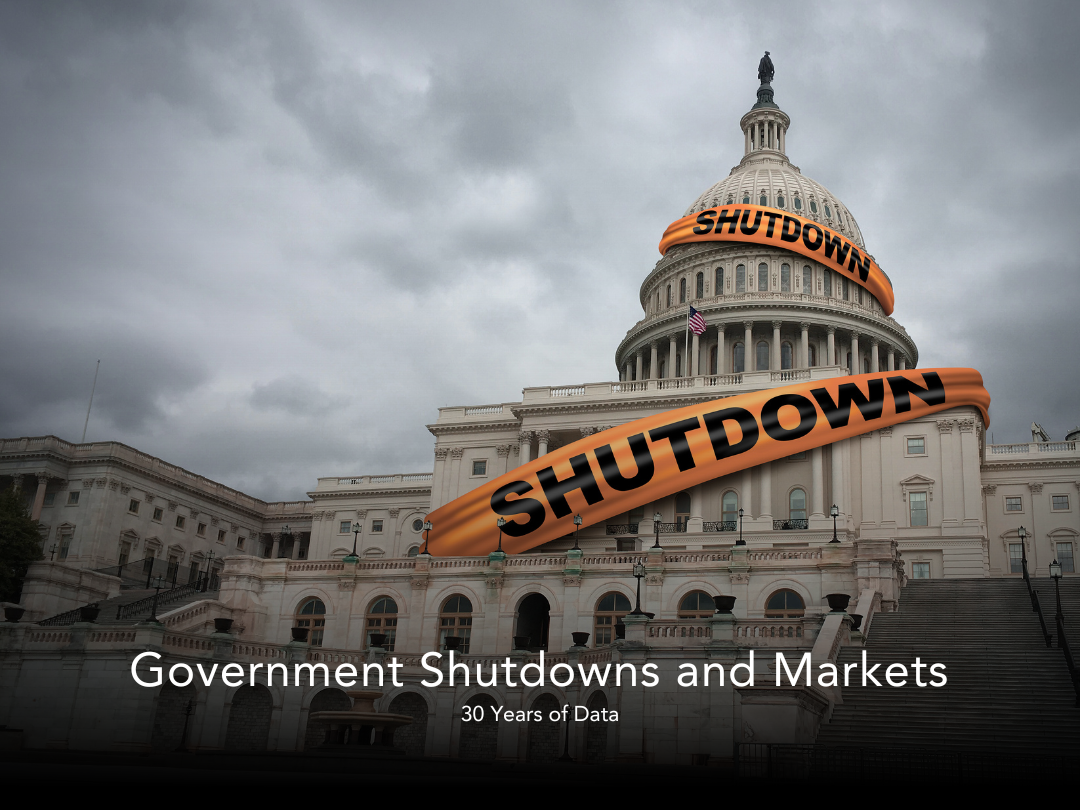Stocks
Historically resilient. The S&P 500 is roughly flat on average during shutdowns and often rises over the following year.
Housing
Short-term frictions—not fundamental damage. Closings can slow (IRS verifications, FHA/USDA processing, potential NFIP lapses), but activity typically normalizes once agencies reopen.
Timeline of major shutdowns (1995–2025) and what happened
1995–1996 (Nov 14–19, 1995; Dec 16, 1995–Jan 6, 1996)
Length: 5 days, then 21 days.
Stocks: Modest volatility; equities finished the period having recovered losses by the end of the second episode. (Contemporary summaries show no lasting equity damage.)
Housing: Temporary operational delays; fundamentals little changed once agencies reopened. (Modern housing-channel effects—IRS/USDA/FHA bottlenecks—mirror later episodes below.)
2013 (Oct 1–16, 2013)
Length: 16 days.
Stocks: The S&P 500 dipped early but ended the shutdown up ~3% for October, with new highs by month-end; 12 months after, returns were strongly positive.
Housing: Mortgage applications fell during the disruption; verifications and some federal endorsements slowed. Once reopened, volumes rebounded over the next few weeks.
Recovery window: Markets recovered within weeks; housing operations normalized within 2–6 weeks as backlogs cleared.
2018 (Jan 20–22, 2018; Feb 9, 2018—hours-long)
Length: 2 days; several hours.
Stocks: Noise amidst broader macro factors; no unique shutdown-driven trend. (Equities were more sensitive to interest-rate and volatility shocks that year.)
Housing: Brief administrative hiccups; limited real-economy impact due to brevity.
Recovery window: Immediate; little backlog accumulation.
2018–2019 (Dec 22, 2018–Jan 25, 2019)
Length: 35 days (longest).
Stocks: The S&P 500 bottomed on Dec 24 amid Fed/credit worries, then rallied strongly into 2019; 12-month lookbacks after shutdowns are typically positive on average.
Housing: FHA staffing limits slowed endorsements; USDA largely stopped new loans/guarantees; flood insurance authority issues periodically complicated closings near coasts. Backlogs took several weeks to clear.
Recovery window: Market rebound began during the shutdown; housing processing normalized over 4–8 weeks post-reopening as case queues were worked down.
General patterns across shutdowns (1976–present, with focus since 1995)
Equities during shutdowns: Average S&P 500 return hovers around flat (≈0.1–0.3%); more than half of shutdowns see gains. 12 months later, average gains around ~10–13% across episodes.
Housing mechanics:
IRS income-verification delays can stall some conventional loans.
FHA endorsements slow with reduced staffing.
USDA purchase/guarantee programs often pause, impacting rural buyers.
NFIP lapses can complicate closings in flood-zone markets.
These are operational chokepoints—not demand collapses—and typically unwind within weeks of reopening.
What “helped” vs. “hurt” and why
Helps/neutralizes:
Shutdowns are known events; markets tend to price finite political risk and look through it, especially if earnings and rates dominate the macro backdrop.
Any delayed economic data releases can even reduce near-term policy uncertainty if investors expect a softer policy stance, supporting risk assets. (Example: 2013 saw equities finish the month higher despite the pause.)
Hurts (temporarily):
Transaction friction in housing: delayed verifications and limited agency staffing slow closings—most visible for FHA/VA/USDA borrowers and in flood-zone markets.
Confidence dips if pay for federal workers is delayed in heavy-government-employment metros, modestly weighing on near-term demand; usually reverses with back pay. (Multiple analyses tie fiscal disruptions to small, short-lived drags vs. structural damage.)
Practical guidance for investors and real-estate clients
Expect delays, not derailments. Build 10–30 extra days into contract timelines for loans that rely on IRS transcripts, FHA endorsements, or USDA guarantees during a shutdown.
Pre-clear flood insurance. If the NFIP is in limbo, line up alternatives or confirm binder timing early.
Cash & strong conventional borrowers move faster. They’re less exposed to bottlenecks; consider temporary rate-lock strategies given data-release uncertainty.
Equity market context matters more than the shutdown itself. Earnings trends and rate expectations have historically outweighed shutdown headlines for stock returns; avoid over-reacting to day-to-day noise.









